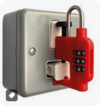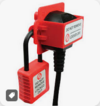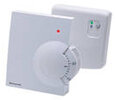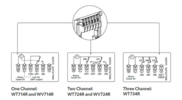- Joined
- 27 Jan 2008
- Messages
- 24,313
- Reaction score
- 2,777
- Location
- Llanfair Caereinion, Nr Welshpool
- Country

There was a question, on changing to a thermostat with these
 connections, when the original used a battery for power. Three core and earth to original thermostat, but two cores, earth and grey, not connected. No more info, don't know if cable goes to boiler, or wiring centre, so the question is where to get power from. So I consider what we may have.
connections, when the original used a battery for power. Three core and earth to original thermostat, but two cores, earth and grey, not connected. No more info, don't know if cable goes to boiler, or wiring centre, so the question is where to get power from. So I consider what we may have.
* The boiler may be room sealed, so maybe not a good idea to suggest looking in the boiler for the other end of the cable.
* Any wiring centre will likely have a lot of cables, and to direct to there, easy to select wrong cable.
* The Nest Gen 3 is often powered from a USB supply, which, is in turn, powered from some handy 13 amp socket, so why not power from a handy socket?
* The Meross does not connect to TRV heads, so may as well use Nest e which is smart and battery powered, so why use Meross?
The idea of supplying a thermostat from the boiler, is for when the boiler is 230 volts controlled, and you want the boiler's fuses to control the input from the thermostat, so the thermostat can not by-pass the boilers' protection, So taking from the same FCU does not really help with many boilers. It also means no 230 volt is supplied to the boiler, if the FCU fuse is removed. Also, if the boiler's FCU is supplied from an UPS, clearly want the thermostat to be also battery backed in some way.
But when advising over a forum, with limited info, doing a risk assessment, and likelihood of the method working or not, what is wrong with an independent supply?
I have looked at the cradle method, and it is so dangerous to start with, as nothing to stop a twin or triple channel thermostat from being put on a cradle wired for single channel using extra low voltage control, so any argument as to wrong connections made in the future, that does not really hold water.
and it is so dangerous to start with, as nothing to stop a twin or triple channel thermostat from being put on a cradle wired for single channel using extra low voltage control, so any argument as to wrong connections made in the future, that does not really hold water.
So is there really any problem using an independent supply to power the thermostat? Another what does the team think.
 connections, when the original used a battery for power. Three core and earth to original thermostat, but two cores, earth and grey, not connected. No more info, don't know if cable goes to boiler, or wiring centre, so the question is where to get power from. So I consider what we may have.
connections, when the original used a battery for power. Three core and earth to original thermostat, but two cores, earth and grey, not connected. No more info, don't know if cable goes to boiler, or wiring centre, so the question is where to get power from. So I consider what we may have.* The boiler may be room sealed, so maybe not a good idea to suggest looking in the boiler for the other end of the cable.
* Any wiring centre will likely have a lot of cables, and to direct to there, easy to select wrong cable.
* The Nest Gen 3 is often powered from a USB supply, which, is in turn, powered from some handy 13 amp socket, so why not power from a handy socket?
* The Meross does not connect to TRV heads, so may as well use Nest e which is smart and battery powered, so why use Meross?
The idea of supplying a thermostat from the boiler, is for when the boiler is 230 volts controlled, and you want the boiler's fuses to control the input from the thermostat, so the thermostat can not by-pass the boilers' protection, So taking from the same FCU does not really help with many boilers. It also means no 230 volt is supplied to the boiler, if the FCU fuse is removed. Also, if the boiler's FCU is supplied from an UPS, clearly want the thermostat to be also battery backed in some way.
But when advising over a forum, with limited info, doing a risk assessment, and likelihood of the method working or not, what is wrong with an independent supply?
I have looked at the cradle method,
 and it is so dangerous to start with, as nothing to stop a twin or triple channel thermostat from being put on a cradle wired for single channel using extra low voltage control, so any argument as to wrong connections made in the future, that does not really hold water.
and it is so dangerous to start with, as nothing to stop a twin or triple channel thermostat from being put on a cradle wired for single channel using extra low voltage control, so any argument as to wrong connections made in the future, that does not really hold water.So is there really any problem using an independent supply to power the thermostat? Another what does the team think.




